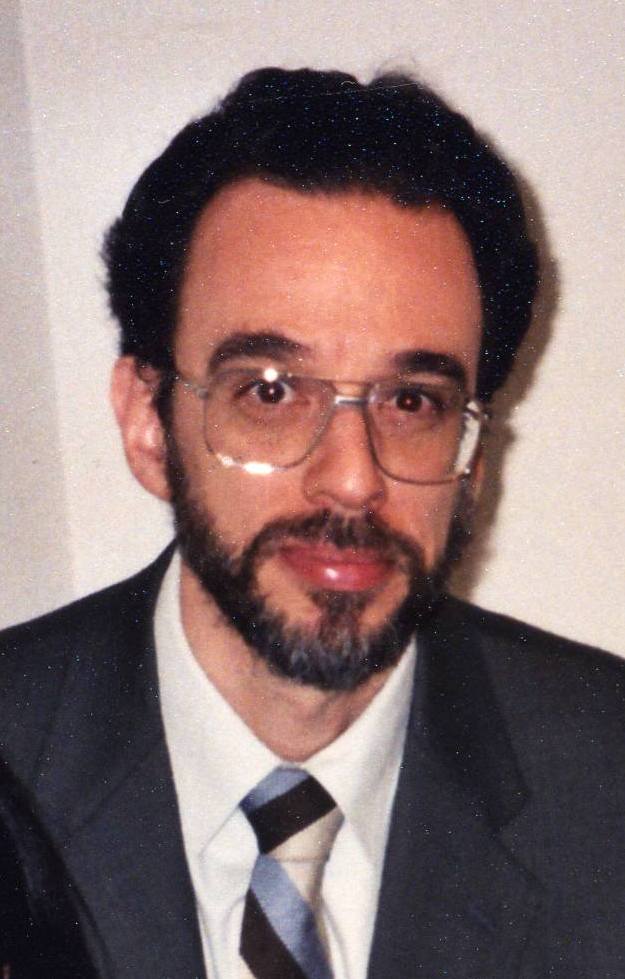
Email:t.nouspikel@sheffield.ac.uk
Institute for Cancer Studies
G Floor Medical School
Beech Hill Road
Sheffield S10 2RX
United Kingdom
 |
|
|
Email:t.nouspikel@sheffield.ac.uk |
Institute for Cancer Studies G Floor Medical School Beech Hill Road Sheffield S10 2RX United Kingdom |
Nouspikel T. DNA repair in mammalian cells: So DNA repair really is that important? Cell Mol Life Sci. 66:965-7 (2009) Editorial.
Nouspikel T. DNA repair in mammalian cells : Nucleotide excision repair: variations on versatility. Cell Mol Life Sci. 66:994-1009 (2009). Review. [Abstract]
Nouspikel, T. Differentiated Cells Play Favorites: Dissecting the Mechanisms of Discrimination in DNA Repair. In: Progress in DNA Damage Research, Miura, S. and Nakano, S. Editors. Nova Science Publishers, Inc. (2008) Book Chapter. [Abstract]
Nouspikel T. Nucleotide excision repair and neurological diseases.DNA Repair 7:1155-67 (2008). Review.[Abstract]
Nouspikel, T. and Hanawalt, P.C. Impaired nucleotide excision repair upon macrophage differentiation is corrected by E1 ubiquitin-activating enzyme.Proc Natl Acad Sci USA. 103:16188-93 (2006) [Abstract] [Full paper].
Nouspikel, T. Hyka-Nouspikel, N., Hanawalt, P.C. Transcription
domain-associated repair in human cells.Mol
Cell Biol 26:8722-8730 (2006) [Abstract]
Nouspikel, T. DNA repair
in differentiated cells: Some new answers to old questions.Neuroscience 145:1213-1221
(2007) [Abstract]
Hsu, P.H., Hanawalt, P.C., and Nouspikel, T. Nucleotide
excision repair phenotype of human acute myeloid leukemia cell lines at
various stages of differentiation. Mut
Research 614:3-15 (2007) [Abstract]
Nouspikel,T. and Hanawalt, P.C. When parsimony backfires: neglecting DNA repair may doom neurons in Alzheimer's disease. BioEssays 25:168-173 (2003) [Abstract]
Nouspikel,T. and Hanawalt, P.C. DNA repair in terminally differentiated cells. DNA Repair 1:59-75 (2002) [Abstract]
Nouspikel, T., and Hanawalt, P.C. Terminally differentiated human neurons repair transcribed genes but display attenuated global DNA repair and modulation of repair gene expression. Mol. Cel. Biol. 20:1562-1570 (2000) [Abstract][Full paper]
Role of XPG in xeroderma pigmentosum and Cockayne syndrome
Thorel, F., Constantinou, A., Dunand-Sauthier, I., Nouspikel, T., Lalle, P., Raams, A., Jaspers, N.G., Vermeulen, W., Shivji, M.K., Wood, R.D., and Clarkson, S.G. Definition of a short region of XPG necessary for TFIIH interaction and stable recruitment to sites of UV damage.Mol Cell Biol. 24:10670-80 ( 2004) [Abstract][Full paper]
Lalle, P., Nouspikel, T., Constantinou, A., Thorel, F., and Clarkson, S.G. The founding members of xeroderma pigmentosum group G produce XPG protein with severely impaired endonuclease activity. J. Invest. Dermatol. 118:344-51 (2002) [Abstract]
Nouspikel, T., Lalle, P., Leadon, S.A., Cooper, P.K., and Clarkson S.G. A common mutational pattern in Cockayne syndrome patients from xeroderma pigmentosum group G: Implications for a second XPG function. Proc. Natl. Acad. Sci. USA 94:3116-3121 (1997) [Abstract][Full paper]
Nouspikel, T. and Clarkson, S. G. Mutations that disable the DNA repair gene XPG in a xeroderma pigmentosum group G patient. Hum. Mol. Genet. 3:963-967 (1994) [Abstract]
Scherly, D., Nouspikel, T., Corlet, J., Ucla, C., Bairoch, A., and Clarkson,
S. G. Complementation of the DNA repair defect in xeroderma pigmentosum
group G cells by a human cDNA related to yeast RAD2. Nature 363:182-184
(1993) [Abstract]
Glucokinase in primary rat hepatocytes
Nouspikel,T. and Iynedjian, P. B. Insulin signaling and regulation of glucokinase gene expression in cultured hepatocytes. Eur. J. Biochem. 210:365-373 (1992) [Abstract]
Nouspikel,T., Gjinovci, A., Li, S., and Iynedjian, P. B. Unimpaired effect of insulin on glucokinase gene expression in hepatocytes challenged with amylin. FEBS Lett. 301:115-118 (1992) [Abstract]
Iynedjian, P. B., Pilot, P.-R., Nouspikel, T., Milburn, J. L., Quaade, C., Hughes, S., Ucla, C., Newgard, C. B. Differential expression and regulation of the glucokinase gene in liver and islet of Langerhans.Proc. Natl. Acad. Sci. USA 86, 7838-7842 (1989) [Abstract] [Full paper]
Iynedjian, P. B., Jotterand, D., Nouspikel, T., Asfari, M., and Pilot, P.-R. Transcriptional induction of glucokinase gene by insulin in cultured liver cells and its repression by the glucagon-cAMP system. J. Biol. Chem. 264, 21824-21829 (1989) [Abstract][Full paper]

From left to right:
See the lab web page for more details.